I've learned a few things about myself as a writer and a group member by being part of a writing critique group for the past nine months.![]()
Viewing: Blog Posts Tagged with: Critique Group, Most Recent at Top [Help]
Results 1 - 25 of 42
Blog: TWO WRITING TEACHERS (Login to Add to MyJacketFlap)
JacketFlap tags: writing, critique group, Add a tag
Blog: (Login to Add to MyJacketFlap)
JacketFlap tags: Critique Group, Kathi Appelt, VCFA, Vermont College of Fine Arts, Writing career, Writing Techniques, Dana Walrath, Distraction/Procrastination, David McGinnis, Joy Peskin, Add a tag
You roll your quarters, register, and highlight the dates on the calendar. You pre-pick your plane seat and pack your bags. You’re going to a workshop! You look forward to it for months, fret about how many pairs of shoes to take, and finally, it’s time to blast off. I got to do just that earlier this month when I attended the amazing 12th Annual Novel Writing Retreat at Vermont College of Fine Arts. (If you’d like a great recap of the experience itself, I highly recommend visiting Debbi Michiko Florence’s site.)
I don’t know about you, but time passes at a sloth’s pace leading up to an event, but then the workshop itself whisks by at road runner speed. If you’re not careful (and by you’re, of course, I mean, I’m), it’s easy as gliding up an escalator to let the whole experience slip away once you’re back home.
Watch out for these post-workshop mistakes . . .
1. Rushing to query or submit your manuscript. Some writers think, if I don’t send that editor or agent my manuscript as soon as I get home, they’ll forget all about me. Not true, especially when you wisely offer a little reminder in the first sentence of your cover letter about how you met. Even if a presenter gives you a teensy window–like six weeks–to submit, take your time. Better to email a glistening, well-groomed manuscript, than to rush yourself and offer a schloppy copy. Your work is a reflection of you. Go for shiny, not speedy.
2. Neglecting your notes–if your notes are handwritten (mine always are), type them up. Seriously. It won’t take long, and while you’re typing, you’ll be reviewing the gems the presenters shared with you. It’ll be easy to highlight the parts that resonate with you too. [Next, pop some brackets around a hint or suggestion that perfectly applies to your WIP and cut/paste it into your ms. to serve as a reminder when you return to that section.] Don’t want to type? Use an old school highlighter or sticky notes to spotlight the bits you most want to recall. Put those pages (or copies of them) in the folder of goodies (research, hard copies, feedback) you’re compiling for this new novel. The idea is to incorporate every epiphany, aha and eureka into what you’re working on now, plus you’ll make them easier to find for future follies, that is to say, novels.
3. Disconnecting with the people who “clicked” with you. Friend them on Facebook, send a follow-up email or connect with them on LinkedIn. Send a text, a tweet or smoke signal, whatever works for you. These are your new peeps who share your passion. Passing on this chance to expand your circle is criminal, okay, well, at the very least, a pity.
4. Cooling off—you arrived home pooped, but positively giddy about a new idea for your WIP, but then your fervor fizzled. Family, your tyrannical to do list and Facebook eclipsed your euphoria. Don’t let them! If you have a critique group (or a beloved writing buddy), share what you learned with them. Talking about the lectures will help to solidify concepts in your mind. Your group/buddy may also be able to help decide out how to best use what you learned (and of course, you can return the favor). Ask someone to hold you accountable and offer to do likewise.
How about you? How do you keep the momentum moving after a workshop or retreat?
It is our choices, that show what we truly are, far more than our abilities. ~ J.K. Rowling
Blog: (Login to Add to MyJacketFlap)
JacketFlap tags: Finding a critique group, Revision, Critique Group, Critiques, Encouragement, Add a tag
You’ve seen the commercials. There’s a woman with limpity blahsville hair. Her shoulders, schlumpy. Her eyes, rolled. She blows a puff of air upward from her lower lip and ruffles her scruffy bangs–the universal breath of disgust. Then, some product whooshes onto the screen. It’s a bottle of glamorous, sexy-smelling hope for hair. Ms. Lackluster snatches the wunderproduct, suds it through her sorry locks and voila! Cue the fans to blow a mane so magnificent as to make Fabio throw in the towel.
What if there was a “product” that could do the same–give shine, volume and manageability–to your writing? Good news! There is. It’s called Critique Group.
Here’s how this amazing product works:
Shine. Nothing will give your writing that dazzling sheen you desire like a robust critique. Your group can help you snip those dry, split ends created by worn or useless verbiage, identify stronger verbs and methodically polish your work.
Volume. Receiving regular feedback on your work helps to fuel your momentum, which hopefully, results in higher word counts and more pages than you may have accumulated as a solo act. So luxurious!
Manageability. Critique groups, regardless of how you arrange them, typically come with a schedule for sharing your work. Knowing you have these deadlines can help you plan, set goals and make the whole writing process more aimful instead of aimless.
You say you don’t have a critique group of your very own? Instead of pulling out your hair, let’s find you a group ASAP.
Consider these ideas for either starting or connecting with an established group:
- Use social media. Let Facebook friends or Twitter followers know you’d like to join or start a group.
- Visit discussion boards and search “critique groups” to see who’s seeking. For example, you could start with the SCBWI (Society of Children’s Book Writers and Illustrators) and explore the Resources section.
- Talk with your local children’s librarian or a writing instructor at your local community college about your desire to form a group. You may learn about others who have expressed the same. If there’s a public bulletin board at the library or community college, post a “Want Ad” there.
- Go to writing conferences or take writing classes and do a little friendly snooping to find out about the groups of your fellow attendees. Who knows, they may be hoping to add a new member.
- Ask other writing friends for ideas. Ask how they decided between joining a face-to-face or online group (and the advantages/disadvantages of each), how their group is structured and if they know of a group with an opening. If your friend is groupless, ask about starting a new group of your own.
If you’re already in a group and have more ideas, tips for how to structure or improve a critique group, please share.
Wishing you gorgeous “hair” days ahead!
Blog: TWO WRITING TEACHERS (Login to Add to MyJacketFlap)
JacketFlap tags: peer conferring, critique group, Add a tag
Blog: TWO WRITING TEACHERS (Login to Add to MyJacketFlap)
JacketFlap tags: critique group, Add a tag
Blog: (Login to Add to MyJacketFlap)
JacketFlap tags: Risk-taking, Improving your writing, accepting criticism, feedback, Revision, critique group, Critiques, critique, constructive criticism, Add a tag
You trust someone, and then you’re stabbed in the back. Hurts, doesn’t it? Ever thought of inviting someone to stab you in the front? Sure, that’d hurt too. But it’d be a constructive versus destructive brand of pain. Okay okay, I know that sounds strange, maybe even a little creepy, but please stick with me for a few more sentences, and I’ll explain as best I can.
See, even though writing by its nature is a solo sport, that doesn’t mean you can’t invite others to join your team. By others, I mean other writers who can give constructive criticism–aka stab you in the front, to hit you where it hurts most–right in your writing.
Losing weight, staying on track with an exercise regime, even cleaning out the garage, are all easier if you have at least one person to come alongside you support, encourage–maybe even push–you. Why should writing be any different? If you’re frustrated with your lack of progress, either in term of pages or improvement, consider opening yourself up to a good, ol’ fashioned front stab.
[At least] three things are certain:
1. Someone pushing you without your permission will only make you want to push back.
2. You need to ask someone to hold you accountable. Nobody volunteers for that job, but most people will say yes if you invite them, especially if you’re willing to reciprocate.
3. You will make better and faster progress with accountability and input, than you will without it.
This is why I am so grateful for my critique group. They’re a friendly bunch of front stabbers who want me to become a better writer and I’m happy to help them do the same.
If you feel stuck with your writing, let me encourage you seek out your own critique group (ask around on Facebook, via your SCBWI chapter list serve or your local library). If a group isn’t already in place, start one. And remember, you don’t have to let geography limit you. Online critique groups can work very well and can include writers from all over the planet, if you like. (I suggest keeping your group Earth-bound. Anything beyond that can get too complicated.) If joining/starting a group sounds like too long of a leap, consider partnering with another writer and setting up a regular schedule for exchanging pages.
Connecting with other writers for criticism and accountability will make a positive difference for you. I promise.
G’head. Take a stab at it.
As iron sharpens iron, so one person sharpens another. ~ Psalm 27:17My thanks to Ben Redmond, Director of Student Ministries at the Hub, for inspiring this post. He’s a wise man.
Blog: TWO WRITING TEACHERS (Login to Add to MyJacketFlap)
JacketFlap tags: critique group, Add a tag
Blog: TWO WRITING TEACHERS (Login to Add to MyJacketFlap)
JacketFlap tags: writing, critique group, Add a tag
Are you ready to join a writing critique group? Take the plunge and sign up as we start you on a new writing journey!![]()
Blog: Guide to Literary Agents (Login to Add to MyJacketFlap)
JacketFlap tags: critique group, writing group, Writer’s Digest Magazine July/August 2014 Online Exclusives, Add a tag
 Writing often is a solitary endeavor, one that easily can lead to loneliness. You can spend hours alone at your desk, staring at your computer screen or a blank page, without encountering another human being (and no, tweets and Facebook messages don’t count). While some writers thrive in solitude, others crave the interaction with other writers—members of their own clan who will encourage them, inspire them and support them when the writing road gets rough.
Writing often is a solitary endeavor, one that easily can lead to loneliness. You can spend hours alone at your desk, staring at your computer screen or a blank page, without encountering another human being (and no, tweets and Facebook messages don’t count). While some writers thrive in solitude, others crave the interaction with other writers—members of their own clan who will encourage them, inspire them and support them when the writing road gets rough.
If you’re seeking the companionship of fellow scribes, you needn’t look farther than your own neighborhood or city. Writing groups abound in nearly every town, and if your own neck of the woods doesn’t currently offer one, consider forming one of your own. In this online exclusive, seven groups from around the U.S. share their top tips for making their small community work. Their candid answers illuminate the best formats, possible pitfalls and lessons learned, gleaned from years of cultivating an intimate writing community. Use their advice to seek out the best writing group for you—or create a list of “must-haves” for your own group.
And for even more advice on joining, forming and maintaining a successful writing group, check out our feature in the July/August 2014 issue of Writer’s Digest!
 Atlanta Writers’ Collective
Atlanta Writers’ Collective
We’re intensely focused, motivated writers who understand the importance of constructive criticism and honesty, and consider the knowledge we gain from hearing critiques of other members’ work just as educational as hearing critiques of our own work. With the help of four large frisky dogs, delicious food and a bottomless coffee pot, we keep our small but mighty pack enthusiastically circling back month after month as we nip at each other’s paws, propelling our members forward. The writing skills we learn from each other due to the eclectic cross-genre perspectives and diverse styles of the members is invaluable, an experience that can’t be taught by any conventional research or study methods.
WRITING FROM: Snellville, Ga.
SIZE: We have nine carefully-chosen members, many of whom have been members for years. (Front row, left to right: Kristine Ward, Natalie Watts, Kerry Denney, Ken Schmanski; back row, left to right: Lorraine Norwood, Lynda Fitzgerald, Glenn Emery, Richard Bowman, Mike Brown)
FORMAT: We critique two writers’ entries each month, 20 to 25 pages apiece, submitted one to two weeks in advance. At the meetings, each member has five to seven minutes to give a verbal critique, and each supplies a written critique. Writers being critiqued remain silent during the critiques, then spend 10 to 15 minutes responding by discussing their material with the group after all critiques are finished. Our group consistently tries to be supportive and encouraging while providing honest, discerning feedback, complimenting the writer on parts that work and sharing ideas about how to fix the parts that do not. Each writer is encouraged to critique using their own unique perspective and skills, with an optional standard critique form supplied.
MEET UP: We meet on the first Saturday of each month for two to three hours in a comfortable setting at a member’s home. We spend a casual 20 to 30 minutes prior to the meeting having coffee and snacks, and freely discussing whatever we choose, then we spend 15 minutes sharing any helpful writing tips, links or books we’ve encountered the past month before beginning. This social time has brought us closer together as a group.
BETWEEN MEETINGS: We write, write, write! All members are encouraged to discuss and share works further at their leisure, and we stay in contact through a Yahoo Groups site, sharing articles, ideas, successes, goals, dreams, anecdotes and books (informative books on writing and/or entertaining stories and novels), along with a liberal dose of good humor, which plays a vital role in our correspondence.
LESSONS LEARNED: To be successful writers, we must work to improve our knowledge and skills in both the craft and business of writing. By meeting regularly with people we trust who attend every meeting with enthusiasm, positive energy and a supportive attitude, we all learn how to improve our writing craft, how to accept constructive criticism as a helpful tool instead of a creativity barrier, and how to incorporate all facets of the standard policies and procedures in the literary industry into our endeavors. We’ve all learned to check our egos at the door. If one person says something doesn’t work, we listen, but if three or more make the same observation, we seriously consider making the suggested revision.
TIPS: Invite prospective new members to attend a critique meeting before they’re accepted into the group. Request a writing sample to determine their level of expertise. This doesn’t determine whether they’re invited to join the group, but rather helps the group establish if and how we can help them.
 The Bearlodge Writers
The Bearlodge Writers
The Bearlodge Writers (BLW) group has been active since 1979. BLW is open to any writer, new or experienced, seeking a welcoming, safe place to present work for praise and for constructive, sensitive critique. The group works with writers from first draft to last revision prior to publication. While BLW’s main mission is to offer assistance and support to one another, it has also sponsored writers’ residencies and scholarships and participated in writers conferences.
WRITING FROM: Sundance, Wyo.
SIZE: Currently, we have 20 members on our active email list. Members have ranged in age from 15 to 82.
FORMAT: BLW’s format is simple and effective. We sit around a large table located in a conference room at a very supportive local library, read the work, and garner both praise and critique from the other writers present at the table. At one time, we did not bring copies of the work to pass around, but simply read the work while listeners made notes. Now, writers bring copies of the material to pass around the table. The writer reads while listeners write notes on the pages or suggest comments, and marks any corrections. Sometimes, a writer will ask another writer to read the material. After critique, all copies are signed and returned to the writer. It cannot be stressed enough that we value kindness and respect for each writer’s work above criticism.
MEET UP: BLW gathers at the Sundance Library on the first Tuesday of every month, at 11:00 a.m., and on the third Tuesday at 5:00 p.m. One member travels more than 150 miles, round trip, for meetings. Others come from neighboring South Dakota, a round-trip drive of about 60 miles. Those arriving first start the coffee and set out snacks—including lots of chocolate. Before the reading and critique session, BLW spends about 30 minutes discussing any business, sharing information about writing successes and publishing opportunities, and answering general questions. Those present needn’t have a piece of writing on a given day. Those who have brought work to be critiqued draw from a bag of dominoes that is passed around the table. Work is read in order from the smallest domino number to the largest. Each writer brings a unique and valued skill set to the table. We have writers who envision the story arc, ferret out the thread of the writer’s intent and give advice on overall structure. Others are “grammar police,” able to determine proper word usage and phrasing. Members often comment about how the piece affects them emotionally and/or intellectually.
SUPPORTING EACH OTHER: Most importantly, it is about respect for the writer and the work. We are earnest about sharing a deep level of trust. What is read or said at BLW stays at the table until such time as the author chooses to share it. We offer consistent and sincere encouragement. As one member recently stated, “Bearlodge Writers is a safe place to be vulnerable.”
LESSONS LEARNED: Our individual successes help perpetuate and encourage the success of everyone in the group. The consistency of the format offers stability, and although members have come and gone—we recently lost one irreplaceable and beloved founding member—the heart and the purpose of the group remains the same: To encourage, respect and nurture writers, honor their processes, and celebrate their victories, whether that victory involves finishing a first draft or achieving publication. Welcoming new members keeps the group vibrant, while long-time members offer an historical and experienced perspective.
 Dallas/Fort Worth Writers’ Workshop (DFWWW)
Dallas/Fort Worth Writers’ Workshop (DFWWW)
We help and encourage North Texas writers of all genres and experience levels to produce professional-quality writing suitable for publication. We do this by providing read and critique sessions, educational activities, networking opportunities and a welcoming, inclusive atmosphere.
WRITING FROM: Euless, Texas
SIZE: 164 members (as of the February 5, 2014 monthly business meeting)
FORMAT: We are a read-and-critique group. That means instead of submitting material for critique prior to the meeting, our members read their writing aloud. This process benefits the writer and the critiquer because both learn to listen for inconsistencies, word echoes, pacing problems, etc.
We have used this format for 30-plus years (the group was established in 1977). DFWWW authors have produced over 300 traditionally published books. We don’t alter the format. It works.
We begin promptly at 7 p.m. and hold a general meeting for 10-15 minutes. We ask any visitors to stand and introduce themselves (we average one to two visitors a week). We ask any new members to stand and reintroduce themselves.
Then, we break into three or four smaller Read Rooms where writers read their work aloud. We are a multi-genre group and do not segregate by genre. This is an advantage because it exposes our membership to other forms of writing that they may not typically read. It’s not unusual for a memoir, YA, thriller, science fiction, a poem, and a nonfiction magazine article to be read in the same room.
Each writer is allowed up to 15 minutes to read, and then receives up to five minutes of round-robin critique. Each reader gets no more than 20 minutes. We average six to seven readers per room and about 20 to 28 reads per week. To stay on track, each room has a monitor. We have the process down to an art.
SUPPORTING EACH OTHER: At the beginning of each weekly meeting, members announce any rejections, submissions or acceptances that occurred since we last met. The group applauds for all of them. It often surprises visitors that we clap for rejections. Our philosophy is “Rejection should be celebrated because it’s part of the submission process. You can’t sell if you don’t submit.”
LESSONS LEARNED: Despite DFWWW’s long and successful history, time has shown that we cannot rest on our laurels. Just as the publishing industry has changed, so have we. More of our members now choose to self-publish versus pursuing the traditional route. At the same time, the number of our members who have sold to traditional publishing houses has also grown.
TIPS: We have a written set of bylaws that govern how the group operates. These include checks and balances that regulate how we function to avoid any confusion.
We recognize our style of read-and-critique does not work for everyone. We encourage potential new members to visit once or twice before they join (membership dues are $100 annually). Because only paid members are allowed to read or to give a critique, we also offer a 30-day trial membership ($25) for anyone who wants to sample the full experience.
We remain focused on our primary goal: writing. We do not allow other distractions to interfere with our stated purpose: “to produce professional quality writing suitable for publication.”
 Prose Group
Prose Group
We are a group of men and women who are all interested in words. Some of us are published authors (both self and traditional); others want simply to learn how to write better. Some write fiction; many write creative nonfiction. We congratulate each other on successes and sympathize over rejections.
WRITING FROM: Fearrington Village, Pittsboro, N.C.
SIZE: Eight members (From left to right: Carlton Lee, Laura Jensen, Dick Merwarth and Ronnie Lynton [seated], Caroline Taylor, and Les Ewen; not pictured: Calista Moon and Paul Stiller)
FORMAT: We have had the same format and the same coordinator for the entirety of our existence. Our format is to agree on a topic or theme (and sometimes genre) for the next meeting. Members are always free to submit something they’re already working on. A format that hasn’t worked well for us is to write for publication in a specific journal or magazine.
We made a decision to keep the group small. Our size gives each member time to ask questions, provide feedback and make suggestions. We meet for two hours and normally fill every second with conversation. We have always tried to keep our critiques positive and encouraging.
MEET UP: Submissions are circulated in advance by email. At our monthly meetings each member reads a paragraph from his or her submission, and others critique the work for its strengths and weaknesses. Discussions occur about what approaches or techniques the writer might consider using to strengthen the piece.
SUPPORTING EACH OTHER: This group has been meeting for nearly seven years with more or less the same members, many of whom have taken input from the group to get stories or novels published. Last year we had a very successful open-to-the-public “writers read” at McIntyre’s Books, a local independent bookstore.
TIPS: Focus discussions on the actual writing, not the subject matter. During our meetings we stress the need for limiting discussions to the writing. Submitted pieces should include not only the name of the author but should identify the work as either fiction or nonfiction.
Road Warriors
We are a rambunctious mishmash of women that talk loud, fight passionately about word choices and always order dessert. We have members in their 20s , 30s, 40s and 50s, and we write scripts, novels, steampunk and nonfiction (and a few more genres.)
WRITING FROM: Los Angeles, Calif.
SIZE: 5 members.
FORMAT: We go over everyone’s work one at a time and share notes one at a time, too. We do discuss things as a group, but we also make sure everyone gets a turn to talk. This has been crucial and extremely helpful in terms of getting comprehensive notes and not pissing anyone off.
MEET UP: We meet once a month and go over any pages group members have sent. We all send pages a minimum of two days before we meet so we all have enough time to read each other’s work. We order drinks and food, and dive into discussing each other’s work. If a person is particularly stressed or has a big project, we’ll go over their pages first. It’s a loosely structured format, but we are very mindful of respecting each other’s work and making sure everyone has a chance to share their notes. We also believe in ordering dessert and drinks, because chocolate and alcohol make it much easier to hear that you need to rework Act 2 of your screenplay or that your main love interest is bland.
BETWEEN MEETINGS: At the end of each meeting we set the date for our next one and each state our goals for what we want to accomplish in the interim. We also email each other questions if we want some feedback before we meet again.
SUPPORTING EACH OTHER: Month after month we show up ready to hear each other’s worries and breakthroughs, and to dedicate time and energy to reading and thinking about each other’s work. This is huge. It’s amazing to have a group of women we can send drafts to and get back comprehensive, thoughtful notes. It’s also amazing to have a group of writers to complain about writers block, carpal tunnel, and how you can momentarily go insane trying to find the right sentence to end a chapter with. It is beyond encouraging to hear about other’s struggles and have them support you in yours. It creates a community you can check in with, who will talk you down from giving up on your projects because they’ve all been there before and believe in you. Never underestimate the power of commiserating and being encouraged by other people sharing the highs and lows of the writing life.
LESSONS LEARNED: That all first drafts are shitty; we have writers who are both newbies and professionals, and all of our drafts need work. Notes from a diverse group of people are insanely beneficial. We all specialize in such varying genres and mediums, and it makes our work better.
TIPS: Pick quiet restaurants to meet in with good food. Handle any conflicts or problems head on. Always say what you liked about someone’s writing first. If you follow those three rules you’re pretty much guaranteed to have a good time. It’s also important to spend some time just having fun at each meeting. This bonds you and lets you get to know each other, which can make your notes more meaningful and insightful.
 Trail Mix Publishing
Trail Mix Publishing
We are unique in that we have KidLit authors and illustrators from all genres: picture books, middle-grade and young adult. We each bring different skills and background, yet we share a burning passion for children’s literature.
WRITING FROM: Atlanta, Ga.
SIZE: Seven members: Colleen Bennett, Kim MacPherson, Shannon Martin Marrs, Shanda McCloskey, Tosha Sumner, Christi Whitney, and Aaron Yacher.
MEET UP: Our goal is to meet once a month. Sometimes it’s difficult to arrange the meeting due to our busy schedules, but it’s always worth the effort.
We’ve all become good friends, and so after catching up on each other’s lives, we go around the table reading our work aloud and offering suggestions and comments. The illustrators in the group also share their newest pieces during this time.
BETWEEN MEETINGS: We write, and/or draw, and keep the lines of communication open via Facebook and email. At almost any given time, you can find at least two or three of us exchanging works-in-progress, bouncing around ideas, getting advice and lending a supportive ear.
SUPPORTING EACH OTHER: Most importantly, we listen to each other. Whether it be cheering on a full request, a contest win or a rant about a rejection or critique, we listen and empathize or sympathize. We have a private Facebook group page where we share relevant information regarding publishing, agents, editors, tips, news and where we organize our meetings. We bounce ideas off each other and read and comment on each others’ blogs. We also attend SCBWI conferences together, including travel and hotel.
LESSONS LEARNED: Traditional publishing is a hard business to break into. It takes a supportive village to get you through the ups and downs along the journey to publishing.
TIPS: Our group ultimately found each other through SCBWI (Society of Children’s Book Writers and Illustrators) which is a great starting point in finding people who are serious about their craft.
Two-Thirties
We call ourselves the Two-Thirties, which approximates the sum of our ages and the time of day we meet. We are a band of committed women writers between the ages of 50 and 80. We write in multiple genres: fiction, nonfiction, poetry, and screenplays. We love the power and beauty of language. We each have two books either published or forthcoming from various publishers including Knopf, Random House, Story Line Press, and WordTech Communications. We keep writing even though we have all suffered through rejection, frustration and exhaustion. Although Tami is the current poet laureate of Montana and we’re all published, we know that we are in it for the love of the written word, not for glamor or fame. (Of course, we’d happily embrace a little fame if it happened along.)
WRITING FROM: Billings, Mont.
SIZE: There are four of us: Cara Chamberlain, Tami Haaland, Danell Jones and Virginia Tranel.
FORMAT: We send our work to one another via email before our meetings, so we have time to read before we meet. We typically limited ourselves to 20 pages of work per person, but if one of us has a completed manuscript, we’ll read the entire thing so we can talk about pacing, organization, plot and character development, etc. We began with this format, and it worked well, so we have stuck with it.
SUPPORTING EACH OTHER: The most important thing we do is offer close and careful readings of each other’s work. We are the first audience for projects big and small. Because we meet often, we also encourage each other to keep the work coming. Our group provides a safe and understanding place to vent about our rejections and frustrations, and to celebrate our successes. It is extremely valuable to get support from writers who know what a long haul it can be between successes.
LESSONS LEARNED: Critiquing a finished piece and critiquing a work-in-progress are two different things. A finished piece needs detailed feedback. A work-in-progress needs some feedback, but also lots of encouragement as the writer works through her process. We also allow ourselves to disagree: We don’t feel pressed to come to any definitive answer about how a piece should develop. We always allow the writer to make the final decision about what needs to happen with her work.
Add a CommentBlog: Cupcake Speaks (Login to Add to MyJacketFlap)
JacketFlap tags: kidlit, contests, editing, writing, magazines, children's literature, ideas, critique group, inspirational quote, 12x12, Add a tag
Vision is not enough. It must be combined with venture. It is not enough to stare up the steps, we must step up the stairs.
Vaclav Havel
Mom’s Highlights Contest story is finished resting, and thanks to her Contest Magic classmates giving her tons of help, she revised it – AGAIN – cutting and adding and switching and tightening and tweaking (not twerking – trust me – nobody wants to see that).
Yesterday, we went to the mailbox
and Mom unceremoniously dropped it in. She said, “I could work on this thing for the rest of my life.” and “It’s time to stop staring up the steps and step up the stairs.” and “Where do you think you’re going?”
Mom is hoping to win big, but she is also hoping for her cyberclassmates to win big right along with her. She said, “Their stories are amazing.” and “Can I even compete with these people?” and “There’s nothing up there for you.”
Blog: Cupcake Speaks (Login to Add to MyJacketFlap)
JacketFlap tags: contest, kidlit, editing, writing, magazines, ideas, revising, critique group, submitting, inspirational quote, 12x12, Add a tag
When I first came here, I had to be fixed. I wasn’t broken, but getting fixed was about not getting any more puppies in my belly. That’s fine with me.
My puppies were adopted at the shelter where I “lived” (and by lived, I mean barely existed) before I was rescued. Nowadays, I feel that puppies would take away some of Mom’s attention – which belongs 100% on ME. Plus, I use my belly for other things, named treats.
Mom’s story for the Highlights Annual Fiction Contest wasn’t broken, either.
But, boy oh boy, did it need to be fixed. Mom’s cyberclassmates and her cyberteacher from the Contest Magic class gave suggestion after suggestion and asked important questions that made Mom think of important answers and make important changes. At the end of it all, the story was a LOT better than it started out. Like me!
Some things Mom learned were:
1. She is a mental case when it comes to commas. (She, kind, of, already, knew, that,,,)
2. The story problem needs to be close to the beginning of the story.
3. Readers need to learn about characters by what they say and what they do.
4. A problem can’t solve itself. Characters need to work at it and make the solution happen. And it can’t be too easy.
5. Conflict and tension are important. (Mom stinks at both of them.)
6. Sometimes, even your favorite parts of a story need to be cut. It might be scary and hurt a little, but it has to be done.
Blog: Cupcake Speaks (Login to Add to MyJacketFlap)
JacketFlap tags: kidlit, acceptance, editing, writing, children's literature, revising, critique group, picture book writing, submitting, writing class, Add a tag
Today, the park was chock full of surprises. I chased a butterfly whose name was Don’t-You-Dare. I tried to eat a bottle cap, which tasted like sand. I ran in circles on the baseball field till Mom was dizzy and my feet and legs turned brown from kicking up dirt. And I even saw a purple jelly bean and a cigar butt.
After all that excitement, I cooled off on a pile of dirt in the shade of a bench.
Mom got a super-fun surprise last week. Back when she was studying in her Making Picture Book Magic class, she wrote a story called What If I Don’t. Her teacher, Susanna, and all of her online classmates helped her and encouraged her while she worked on it. She also brought it to her writing group called DavidLaurieandOtherDavid. They said, “Fix this, change that, move this, cut that, let’s have more coffee.” Last week, Mom got a contract for her story from MeeGenius! What If I Don’t is going to be Mom’s first ever eBook! Surprise!
MeeGenius is a free app with tons and tons of cute books for kids to read on the iPad and iPhone. Pages turn with a swipe, and there’s also a Read to Me option, in case you’re like me and can’t read.
Blog: Cupcake Speaks (Login to Add to MyJacketFlap)
JacketFlap tags: PiBoIdMo, inspirational quote, 12x12, kidlit, writing, children's literature, ideas, revising, critique group, picture book writing, submitting, quote, Add a tag
But there was one other thing that the grown-ups also knew, and it was this: that however small the chance might be of striking lucky, the chance is there. The chance had to be there.”
― Roald Dahl, Charlie and the Chocolate Factory
I struck lucky when Mom found me a few Decembers ago. Purrs n Pups found me in Georgia in a kill-shelter, where my puppies had been adopted…
….and I was left behind.
They brought me to foster care and my foster-mom brought me to an adoption event where Mom found me.
She said some bad words like, “Too small.” and “Too old.” But then she said some good words like, “I’m taking her home!” and “This is my new dog!”
Mom is always waiting to strike lucky. She works on stories, revises them and revises them, makes cover letters, signs them with her lucky pen, and submits story after story to magazines, book publishers, and agents. Whenever Book #2 gets accepted, that will be her lucky day.
PiBoIdMo is helpful. Mom gets a new idea every single day during that month.
Mom’s 12×12 Challenge is helpful. It keeps her writing new pieces every month.
The class she took named Making Picture Book Magic was helpful. It taught her about planning a story to make sure it has all the parts it needs.
Her writing group named DavidLaurieandOtherDavid is helpful. They help her stories get better and better.
Her computer friends at RateYourStory help her by giving her a reality check about what she writes.
And of course, I help her by taking her to the park to clear her head,
staring at her while she’s working,
and sometimes, I fall asleep on the iPad and type LLLLLLLL with my ear.
Blog: Cupcake Speaks (Login to Add to MyJacketFlap)
JacketFlap tags: kidlit, writing, children's literature, ideas, critique group, picture book writing, writing class, Add a tag
Mom has been workin’ at her writing class every day, except on the weekends. So far she is keeping up and doing fine. She is writing a story she likes and talking about it with people she likes and learning things she never thought she would like.
One thing she is learning about is called plannin’. Mom never did plannin’ before. Usually she gets an idea, thinks about it in her head, and then starts writing a story. When she gets to the end, she fixes it up and shows it to her writing group named DavidLaurieandOtherDavid.
I’ve been plannin’, too. Last week, I got my nails cut….
and got a new jacket.
On Saturday, Mom picked out a dress for me and brought me to see my friends at the Veteran’s Home.
I sat on laps, gave kisses, ate treats, danced, and got lots of hugs and cuddles. Whew. That is what I call workin’.
When Mom finishes workin’ she isn’t tired at all. She puts her coffee cup in the sink and then goes shopping and out to lunch and does other fun things.
When I finish workin’ …. Well, see for yourself…..
Blog: Darcy Pattison's Revision Notes (Login to Add to MyJacketFlap)
JacketFlap tags: writing life, critique group, online, how to create, writer's group, where to find, writer's boards, Add a tag
Why X Heads are Better than I
guest post by Katy Duffield
We all know that writing is rewriting. As much as we’d like for it to be otherwise, early drafts just aren’t ready for prime time. It is imperative that we reread and cut, revise and rearrange, polish and restructure, and cut even more until our manuscripts are as strong as they can be. One of the best ways I’ve found to assist in the quest for the strongest possible manuscript is my writing group—or, in my case, my writing groups. If you know me, you know that I’m a strong proponent of the “two heads are better than one” theory. And even more “heads” are better still. And that’s just what writing groups can offer.
I Love These Gals!
I am a member of an online writing group that has been in existence for eight years. We originally met on author Verla Kay’s Children’s Writers Discussion Board—affectionately known as the “Blue Boards” (http://www.verlakay.com/boards/index.php). This particular group meets only online, through a dedicated Yahoo listserv group, and our writing runs the gamut: rhyming and non-rhyming picture books, middle grade and young adult novels (including verse novels), nonfiction, magazine writing, teacher’s guides and so on. And just as our writing varies, so do our geographical locations; we reside in Canada, Virginia, California, Missouri, Arkansas, and even Brazil.
When the group first formed, we followed a rotating schedule where one or two members would submit a story, chapter, or other piece of writing each week for the others to critique. Our schedule is less rigid now, as we currently submit only on an as-needed basis, but setting up a particular rotation can be a good idea. Just knowing that you have someone anxiously awaiting a new piece of work or a revision when your turn rolls around is a great incentive to keep writing. And the online format is wonderful because you can read and critique on your own schedule.
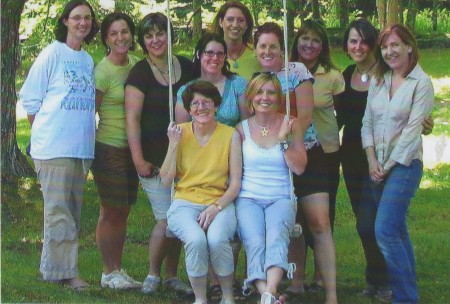
Back Row (l to r): Cassandra Reigel Whetstone, Sara Lewis Holmes, Anne Marie Pace, Alma Fullerton, DeAnn O'Toole, Loree Burns, Katy Duffield, Kristy Dempsey, Linda Urban. Front row: Kathy Erskine, Tanya Seale
Over the years, this particular group has morphed and changed. We’re no longer simply critique partners; we’re close friends. We no longer simply share our writing; we share our families, our worries, our joys and heartbreaks—we share our lives. We’ve been known to generate more than a thousand messages in a month! At this point, it’s as much a support group as it is a critique group. It’s amazing to be a part of a like-minded group of people who understand the importance of celebrating the small victories and who understand the agonies that can be a big part of this business. I have no doubt that I have been richly blessed to find such an amazing group of women. A couple of years ago, we finally had the opportunity to meet in person at Boyd’s Mills for a Highlights Founder’s Retreat (where we happily added five new and wo Add a Comment
Blog: Cupcake Speaks (Login to Add to MyJacketFlap)
JacketFlap tags: kidlit, writing, children's literature, revising, critique group, picture book writing, Add a tag
Every once in a while, Mom goes to her writing group named David. Mom and David talk about writing stories, and they help make their work get better and better. David writes good ideas all over Mom’s story, and Mom does the same to David’s story. Then Mom goes on her computer and does revising. She says, “Revising is important.” and “It makes stories tighter, smarter, and more focused.” and “Where are you going with your empty bowl?”
Last week, the name of Mom’s writing group changed. All of a sudden, it’s not just David! Some new writers joined up and now the group is called DavidLaurieandOtherDavid. That’s a mouthful!
Some new dogs joined my therapy dog group at the VA Home, too. Their names are Scout and Buddy. We don’t really help each other write stories, but we help each other make people smile. Maybe I should call the VA Home ScoutBuddyCharlieCuddlesDottieMoTaz… OK, no. That’s too much of a mouthful.
No matter what they’re called, groups of friends that help us are good. Making work better is good. Making people smile is good.
Blog: Mindy Alyse Weiss (Login to Add to MyJacketFlap)
JacketFlap tags: picture book, critique group, Add a tag
I love my critique groups--they're all amazing, and really have helped me grow as a writer! I've been a proud member of The Prose Shop since 2008, when I saw a post on the Blueboards saying they had a couple of openings. We're a supportive community of published and unpublished writers who write picture books as well as magazine stories. We're dedicated to helping each other improve our techniques and become more confident and capable writers. We discuss and share information, and do our best to help our members make their manuscripts sparkle as much as possible.
The Prose Shop started in 2005, and is organized via a private message board, so we can view all critiques and really work as a team. We critique at least one story for each story we post...but the more critiques you give, the more you usually receive. We ask each member to do at least one critique every 30 days. And to keep the group active and encourage members to write, we ask everyone to post a story at least every three months (which could be a new manuscript or a revision of one that you've already run through The Prose Shop).
We are looking for writers who demonstrate a long-term commitment to writing. We'd love to see applicants who have several picture book manuscripts and/or magazine stories available for critique.
If you are interested in becoming a member, please email [email protected] and we'll send you an application. And if you have any questions, feel free to ask me here, or send me an e-mail or Facebook message. I hope some of my Facebook, LJ, and Blueboard friends will be part of our Prose Shop family soon!
Blog: Writing for Children with Karen Cioffi (Login to Add to MyJacketFlap)
JacketFlap tags: editing, writing, book promotion, critique group, book cover, self-editing, Add a tag
Every author has thought it, said it, and heard it: promotion is the roll-up-your-sleeves, and dig-in part of writing. It’s the much more difficult and time consuming aspect of writing that every author needs to become involved with . . . if he wants to sell his books.
To actually sell a book, you need to have a quality product. This is the bare-bottom, first rung of book promotion . . . the foundation.
Create a Quality Product
The very first step in book promotion is to create a quality product. Hopefully, you noticed I said create a quality product, not just a good story. What this means is that all aspects of your book need to be top notch.
A. The Story
To start at the very beginning, the first factor to be dealt with is to be sure your story has all the essential elements. According to Yale-New Haven Teachers Institute, there are five major elements of a story: characters, setting, plot, point of view, and theme.
All the elements of a story should complement each other, should move each other forward, draw the reader in, and end with a satisfying conclusion. They should work together to create a story that will be remembered.
Suppose your story is action packed and plot driven, but it lacks believable and sympathetic characters, it will fall short. The same holds true if you have a believable and sympathetic character, but the story lacks movement. Again, it will be lacking. As with all things in life balance is necessary, the same holds true when writing a story.
Balance in Writing: The Major Elements
Theme and Your Story
Creating and Beefing Up Conflict
Adding More Dimension to Your Protagonist
B. Join a Critique Group
Yes, this is part of creating a quality story. Even experienced authors depend on the unique perspective and extra eyes that each critique member provides. They will help find: grammatical errors, holes in your story, unclear sentences and paragraphs, overuse of particular words, and weak verbs, among other elements.
They will also provide guidance and suggestions.
Critiques are Essential
C. Editing
Yes, again, this is a necessary step to take to ensure your manuscript is in the best shape possible before it becomes a book. Look for an experienced and qualified editor to help tweak your manuscript. But, before you send it off to be edited, self-edit it first. There are a number of articles out there in cyberspace on self-editing. Take the time and read a few, then go over your manuscript.
Blog: Silver Apples of the Moon (Login to Add to MyJacketFlap)
JacketFlap tags: WIP, Critique group, POBL members, Add a tag
(You can see more of our critique meeting on our POBL blog).
Blog: Writing for Children with Karen Cioffi (Login to Add to MyJacketFlap)
JacketFlap tags: showing not telling, writing tips, writing for children, critique group, Add a tag
Last Monday, I featured Part 1 of Simple as ABC: Writing for Children - Six Basic Tips, which covered tips one and two. Today, is Part 2, covering Tips three through six. So, off we go:
Simple as ABC: Writing for Children - Six Basic Tips Part 2
By Karen Cioffi
3. Show the way for success
While description and a bit of telling have their place, today’s publishers want you to show your story. The technique for ‘showing’ rather than ‘telling’ is to use your character’s five senses, along with dialogue.
The day’s of, “See Dick and Jane walk down the lane,” are far gone.
Showing allows the reader to connect with the protagonist. The reader is able to feel the protagonist’s pain, joy, fear, or excitement. This prompts the reader to continue reading.
If you’re stuck, and can’t seem to be able to ‘show’ a particular scene, try acting it out. You can also draw on your own experiences, TV, or the movies. Study scenes that convey the ‘showing’ you need to depict.
4. Create synergy
Joining the story together in a seamless fashion is probably the trickiest part of writing. The characters, conflict, plot, theme, and details all need to blend together to creat something grander than their individual parts; like the ingredients of a cake. This is called synergy.
It doesn’t matter if your story is plot driven or character driven, all the elements need to weave together smoothly to create the desired affect you are going for: humor, mystery, action, fantasy, or other.
If you have an action packed plot driven story, but it lacks believable and sympathetic characters, you’re story will be lacking. The same holds true if you have a believable and sympathetic character, but the story lacks movement, it will usually also fall short.
All this must be done in an engaging manner, along with easy to understand content.
5. Keep it lean.
According to multi-published children’s writer Margot Finke, today’s children’s publishing world is looking for tight writing. Choose your words for their ability to convey strong and distinct actions, create imagery, and move the story forward.
The publishing costs for picture books over 32 pages is beyond what most publishers are willing to spend, so word counts should be well under 1000, and be sure to make each word count. Keep in mind that the illustrations will add another layer to the story and fill in the blanks.
When writing for young children, the younger the children, the leaner the writing. This means if you’re writing for toddlers or preschoolers, you should limit your word count to a range of 100 to 250 words.
6. Be part of a critique group
This is a must for all writers, but especially for children’s writers. There are so many additional tricks of the trade that you need to be aware of when writing for children, you’ll need the extra sets of eyes.
Your critique partners will no doubt be able to see what you missed. This is because you are too close to your own work. They will also be helpful in providing suggestions and guidance. Just be sure your critique group has experienced, as well as new writers.
~~~~~~~~~~~~~~~~
Blog: Tracy Edward Wymer (Login to Add to MyJacketFlap)
JacketFlap tags: reading, critique group, Add a tag
Monday begins week three of school. It'll be the first five-day week of the year. What will I do? How will I make it to Friday without my brain exploding from hearing my name too many times? I'll find a way. I'll start with Patience and then, if I have to, I'll reach for Mega Patience. If those fail, I'll call up All the Patience in the World. One of those will help me survive. If not, I'll turn to my super power. Coffee. Lots of it. Speaking of surviving...
I'm over halfway through Mockingjay. It's slower than The Hunger Games
and Catching Fire
. I'd go as far as saying this: the first third is mostly backstory and catching readers up with the destruction in the first two books. But I won't go as far as saying that Suzanne Collins and her editor blinked on this one. I've heard the second half is filled with more of Collins' page-turning action. Looking forward to that.
NPR's Three Minute Fiction Contest is back. Check out the rules and think about taking a breather from your work-in-progress. That's my plan. It should be yours too. Come on, it's only 600. More on this after I write my entry, which I'm sure will be tossed in the burn pile. Or simply deleted.
This morning I drank coffee, ate half a bagel, completed a T. Rex puzzle with Blondie, toyed with a sprinkler valve that pointed at me and called me names, watched the Colts lose, and then reread my partial chapter that I subbed to my critique group. (I also did a lot of school prep work, but you don't want to hear about that, it's like watching people walk their dogs). I subbed a partial chapter purposefully and asked for predictions. Good to shake things up a little. Change is good. Same is bad. If I ran for public office, or class president, that would be my slogan. I'd lose. Badly.
Hey, there's a story. Teacher vs. Student. For class president. Write it.
I've gone insane. I've set two goals. Major ones.
1. to finish Bird Nerd by Halloween.
2. to write a novel in November (as part of NaNoWriMo).
Smile, it's only Monday. You have an entire week of writing ahead of you.
Blog: Illustration for Kids Blog (Login to Add to MyJacketFlap)
JacketFlap tags: Anette, critique group, Add a tag

I definitely think belonging to a critique group (illustration group, writing group etc.) can help you move forward in your career. One of the many benefits of being part of a group is that you always have someone who can relate to your situation. If I have questions about the business, problems with a client, if I'm frustrated or struggle with the confidence in my own skills, or if I just want to celebrate reaching a goal I know I can turn to my illustration group - and I know they will understand because they have experienced the same things themselves. It makes me feel more secure knowing that I'm not completely alone, even though my colleagues live on the other side of the world.
If you'd like to be a part of a group why don't start one yourself? Contact a few others you know (or would like to know) and ask if they want to create a group with you. You won't regret it!
Blog: Writing for Children with Karen Cioffi (Login to Add to MyJacketFlap)
JacketFlap tags: self-publishing, critique group, learn to write, self-publish, Add a tag
Part 1: Steps 1 and 2
With today’s oversaturated and tight publishing market, it’s difficult to find even a small publisher for the manuscript you’ve slaved over. Many authors have taken the matter into their own hands and are going the self-publishing route. But, remember, have vision! This can be a worthwhile venture…if you first know a couple of things:
1. Self-publishing and co-publishing will cost you money
This is an absolute when venturing into the self-publishing world. How much money will depend on the company you choose and which of the various services they offer that you buy into. And, there will be many aside from printing your book: editing, cover design, copyright, distribution, press releases, promotion, and so on. Each of these additional services will cost you more money, although most of these companies do offer package deals. I know writers who have spent under a thousand dollars and others who have spent over five thousand dollars to publish their book.
In addition to this, selling books is a TOUGH business. Just because your book is in print or digitally available, it does not mean you will recoup your money, or make a profit.
It may sound a bit harsh, but I’ve seen writers spend money on self-publishing hoping it will bring a return on their investment - this is not always the case.
2. Join a critique group before actually publishing
You’ve decided you want your book published no matter what. Well, that’ fine, but before you start think about which company to use to self-publish, JOIN A CRITIQUE GROUP; it is essential. I do reviews, editing, and critiques, so I read a number of self-published books and manuscripts, and what is evident, is many authors are unaware that they need to have an edited, polished manuscript before they think of going the self-publishing path.
When choosing a critique group, be sure there are new and experienced (preferably published) writers as members, and it needs to focus on the genre you write in. In a critique group, you’ll quickly begin to see, through critiques of your work and that of the other members, how writing should be done. You’ll begin to spot grammatical and punctuation and storyline errors – you will begin to hone your craft. The group will help you polish your manuscript – you’ll be amazed at the difference.
At this point, it is advisable to have it edited as a final insurance. Often, the company you go with to self-publish will offer editing services. Just price it compared to hiring your own editor.
Part 2 will be here Wednesday, February 10th, with steps 3 through 6 of Before You Publish
Follow a great February Writer Tour with great writing and marketing information and reviews:
And you might also find this article of interest: Writing Books - is There Money in it?
Until next time,
Karen Cioffi
http://karencioffi.com/media/page
http://dkvwriting4u.com
Blog: Writing for Children with Karen Cioffi (Login to Add to MyJacketFlap)
JacketFlap tags: critique group, editor, marketing, authors, publishing, writing, Add a tag
I'm the co-moderator of a children's writing critique group. We cover up picture books to young adult to magazine articles.
In addition to this, I'm a reviewer for BookPleasures.com, and Muse Book Reviews - it's easy to tell which authors haven't bother to have their work critiqued or edited.
Any advice I give, or whether I'm writing articles or another e-book about writing for children or writing in general, I always include the importance of belonging to a critique group. Even experienced authors depend on the unique perspectives and extra eyes that each critique member provides.
The critique group can catch a number of potential problems with your manuscript:
1. grammatical errors
2. holes in your story
3. unclear sentences, paragraphs, or dialogue
4. the forward movement of the story
5. overuse of a particular word, adjectives and adverbs
6. unnecessary words to help create a tight story
The list goes on and on. And, there are even more potential problems to be watched out for when writing for children. It's near impossible for even an experienced writer to catch all his or her own errors.
Your critique partners will also provide suggestions and guidance. Note here, it is up to you whether to heed those suggestion and comments, but if all the members of your group suggest you rewrite a particular sentence for clarity, hopefully a light will go off and you'll pay attention.
Along with having those extras sets of eyes to help you along, you will begin to see your own writing improve. You will also be able to find your own errors and those of others much quicker. This will help you become a better and more confident writer.
Now, while the critique group does not take the place of an editor, they do help you get to the point where you think you're ready for submission. At this point, it is always advisable to seek an editor to catch what you and your critique group misses. And, believe me, there will be something in your manuscript that wasn't picked up on.
When looking into joining a critique group, be sure the group you do join has both new and experienced writers. The experienced writers will help you hone your craft just through their critiques of your work.
So, today's tip: if you're not already a member of a critique group, join one today!
Other articles you might be interested in:
"Be Open Minded with Critiques"
http://www.examiner.com/x-32774-Montreal-Writing-Examiner~y2009m12d20-Be-openminded-with-critiques?cid=examiner-email
"The Process of Creating a Childrens Story - Two Different Formulas"
http://www.associatedcontent.com/article/2074735/the_process_of_creating_a_childrens.html?cat=38
"Is Your Manuscript Ready For Submission?"
http://EzineArticles.com/?id=3195996
Until next time,
Karen Cioffi
http://dkvwriting4u.com
http://karencioffi.com
http://nothingventurednothinggained.org
http://daysendlullaby.blogspot.com
http://twitter.com/KarenCV
And, if you're looking for a great e-book to help you on your road to publication, check out:
Writing,
Blog: Writing for Children with Karen Cioffi (Login to Add to MyJacketFlap)
JacketFlap tags: story telling, Children's Writers Coaching Club, showing, writing services, editing, writing tip, critique group, Add a tag
I've written about showing and telling before, but it’s such an important topic that I think more information is always helpful.
Writing is an ongoing adventure…always something to learn and tweak and hone. I recently wrote a children’s story and found I still had a bit of showing in it, thanks to the critique by the Children’s Writers Coaching Club with Suzanne Lieurance (more about the club below).
I was toying with the idea of submitting my story as a picture book, but was advised it would work out better as a children’s magazine article, unless I wanted to rewrite it specifically for a pb. Anyway, I noticed that when I write, and I think this goes for most of us, my thoughts precede my reading ability – so I don’t catch my own errors. This happens because I know what I wrote and what I intend to convey. This makes it almost impossible for a writer to edit her (or his) own work. You can get close, but as the saying goes, Almost Doesn’t Cut It.
What do I mean? Well, let’s look at a simple sentence:
In a daze, Pete stumbled to his feet.
While this isn’t the exact sentence in my story, it is similar. I revised my article and reread it numerous times and didn’t notice that “in a daze” is telling, not showing. And, what’s the KEY to writing in today’s fast paced, no time to waste world? FOCUS AND TIGHT WRITING.
In fact, the fast paced reader of today is getting even more impatient and ready to move on in the blink of an eye. So, we need to take this into account in our writing and marketing.
Okay, back to the focus of the article…
So, how do we change the above sentence into a showing only sentence?
Dazed, Pete stumbled to his feet.
Really simple when you are able to actually read what is written rather than already know what you intended.
What are the important tips to take away?
1. Make sure you are part of a critique group
2. Join the Children’s Writers Coaching Club if you are writing for children
3. Do not submit your work to a publisher or agent before you’ve had it professionally edited.
Now for a bit about the Children's Writers Coaching Club:
I'm a member of Suzanne Lieurance’s Children's Writers Coaching Club and I have to say it is a great club. It delves into writing children’s books as well as writing for children’s magazines: the techniques, tips, the dos and don’ts, it’s all explained. Members are given monthly assignments geared to get your work published. There is also a weekly critique session in which you submit a manuscript or article and Suzanne personally critiques it for you. In addition to this there are weekly teleclasses that teach you the ins and outs of writing for children, freelancing, and marketing. All this along with Suzanne’s knack for motivating and encouraging her members helps you learn and hone your craft. My writing has improved greatly with Suzanne’s guidance and I continue to improve and benefit from this club. I don’t think there is another club that offers so much for such a miniscule price of $27.00 per month.
And, if you're interested in having an extra set of eyes look over your manuscript before submitting it, DKV Writing 4 U offers a wide range of writing services - check it out at http://dkvwriting4u.com/.
Another article that might interest you:
2 Comments on Are You Showing or Telling?, last added: 1/10/2010
View Next 16 Posts







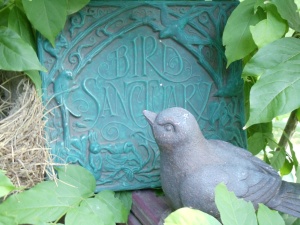









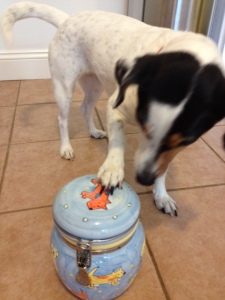
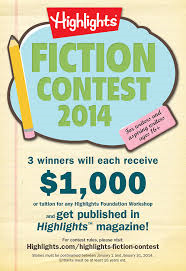


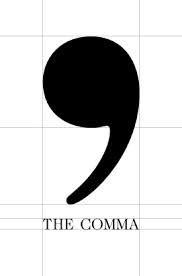








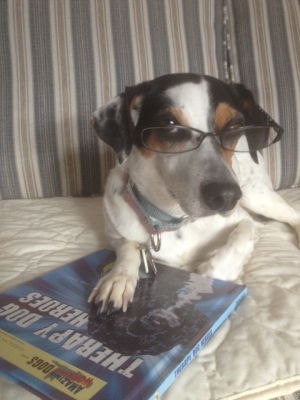



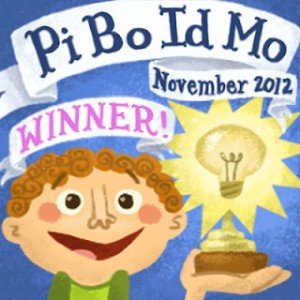
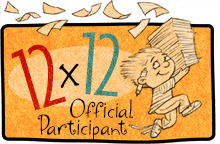
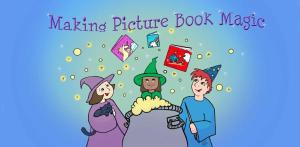
















We have been staring up the stairs for THREE YEARS now…butt we’re not allowed to go up them because that is where the sister cats live and the magical “big bed” is.
We’ve got our paws crossed that you mom wins Cupcake!
Wally & Sammy
I’ll cross my paws for your mom, Cupcake, but she’s a winner in my eyes anyway

That’s a great quote, I have to write it down for Granny…well, she does take the stairs, but when she’s halfway, she forgot why she took them….sigh… Pawkisses for a Happy Weekend
Maybe it’s good I moved to a house with no stairs xx
xx
Paws crossed for Mommy, Like Binky said, she’s a winner in our eye’s. Have a super weekend xxxoxxx
Mollie and Alfie
Oh Cupcake I just love your jacket! You look ready to head out and have a nice bit of exercise in the cold (assuming nothing will touch your belly of course!!)……my Mom and I hope your Mom wins big – she works hard at her craft of writing – and deserves to win the Contest – with you as her “Head Cheerleader” I’m SURE she will!
Hugs, Sammy
I’m keeping my paws crossed for your mom!
You do look sweet in your jacket, Cupcake.
That is a rather profound quotation today. I hope your Mom reaches the top of the stairs with her story and finds a good reward.
Purrime Ministerettes salute you!
Cupcake, I hope your Mom wins the Highlight Contest. That would be quite a feather in her bonnett. My good vibes are being directed toward her entry. Goo9d luck to both of you.
We will keep our paws crossed, too! Love Cupcake’s festive coat, just right for Valentine’s Day.